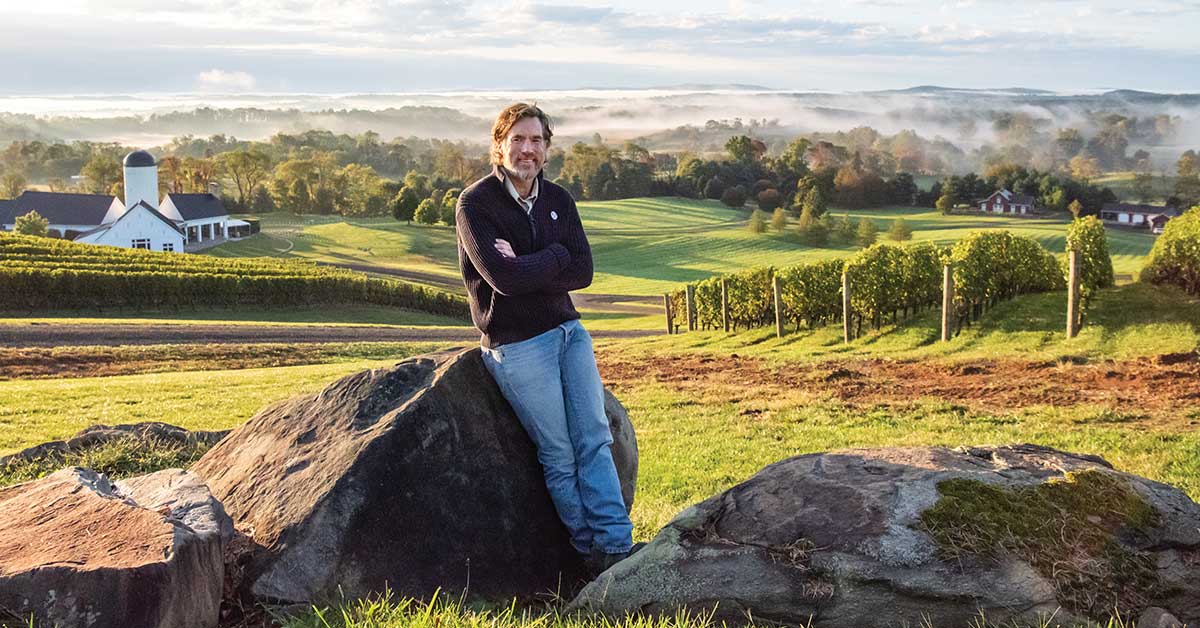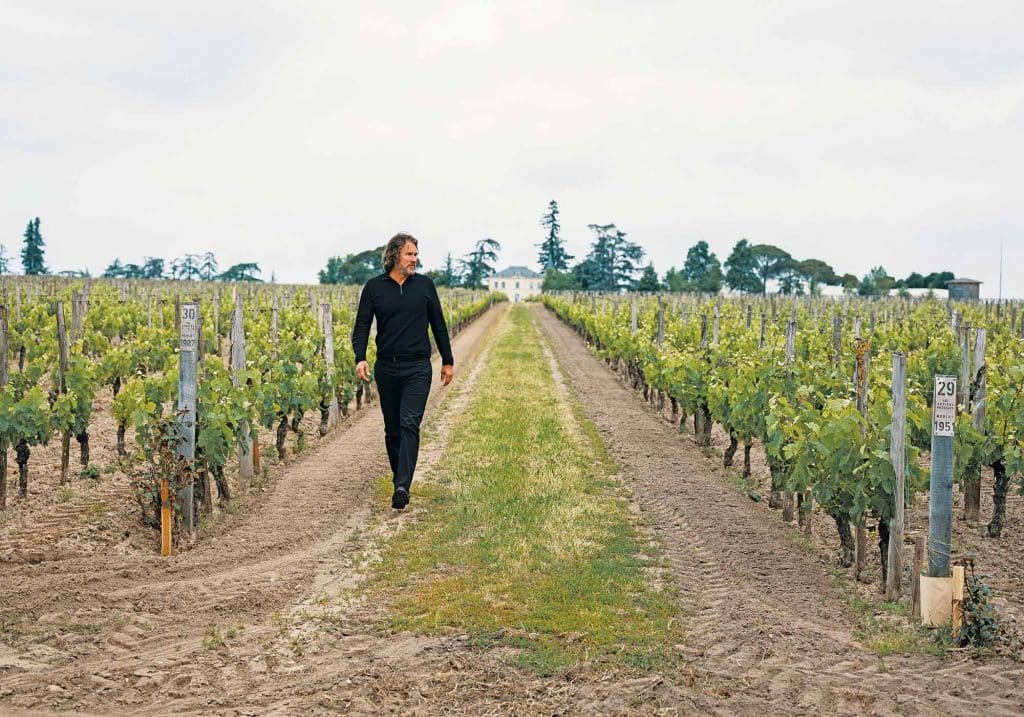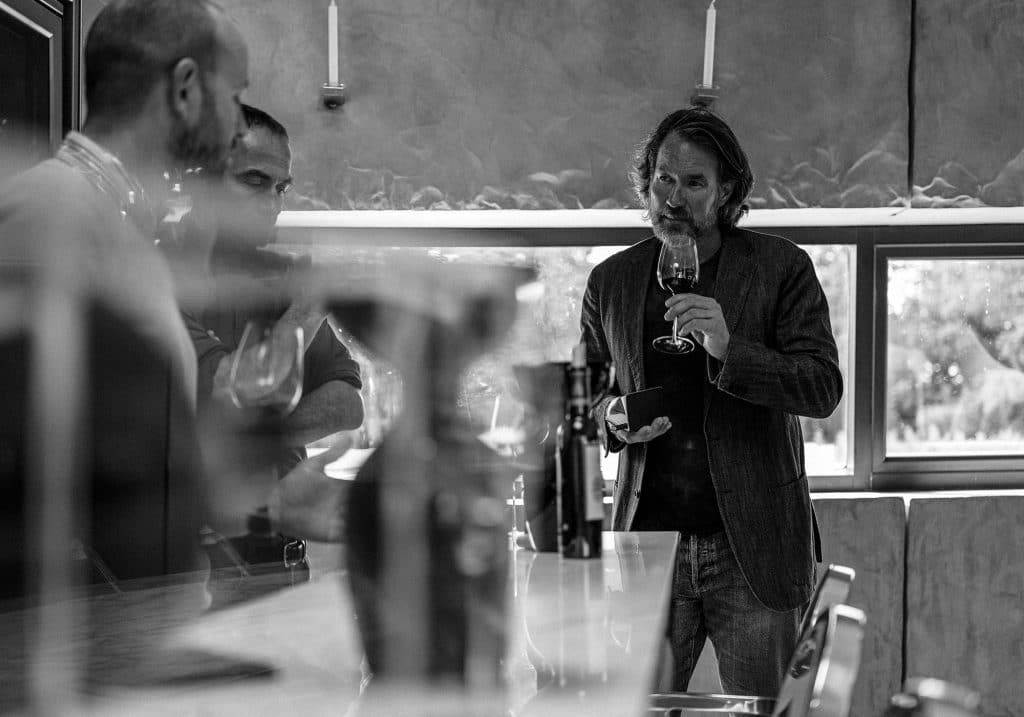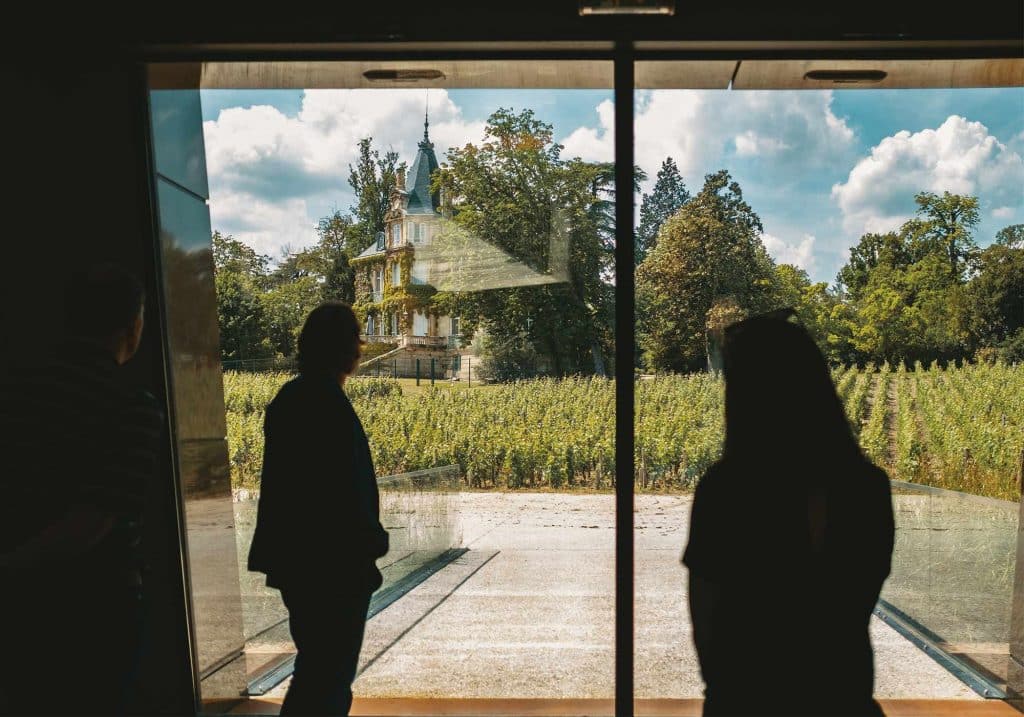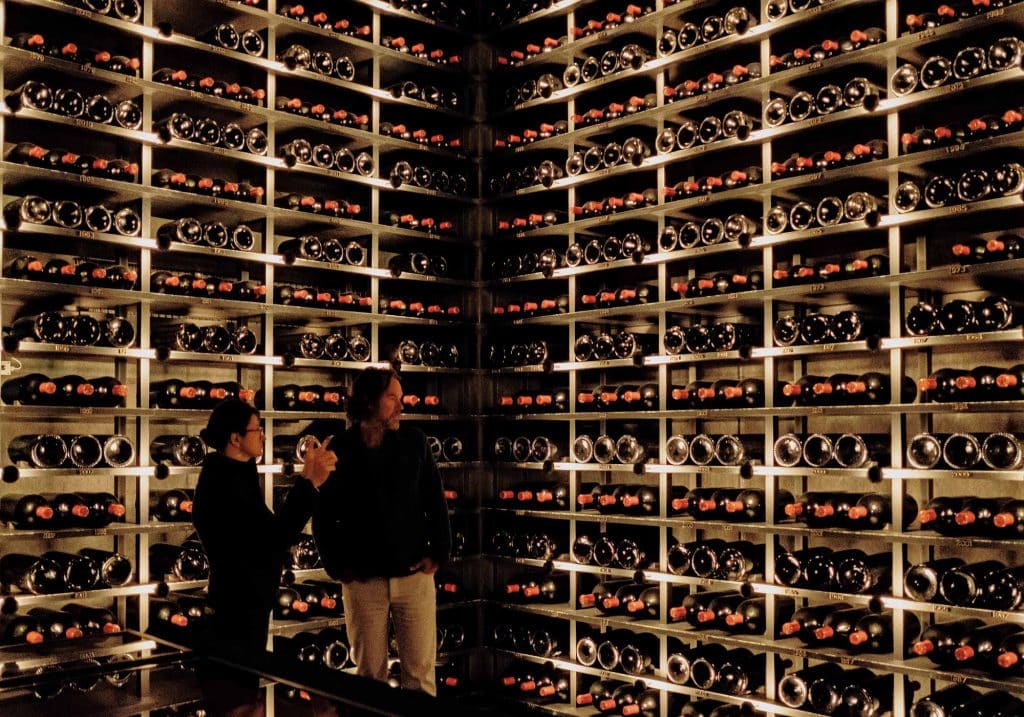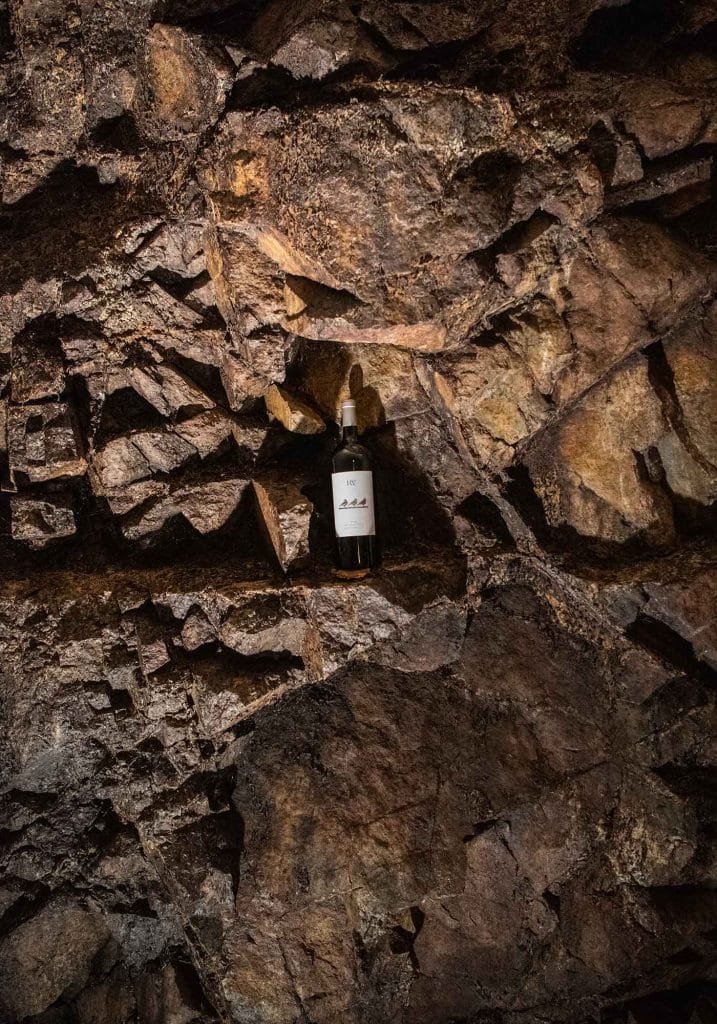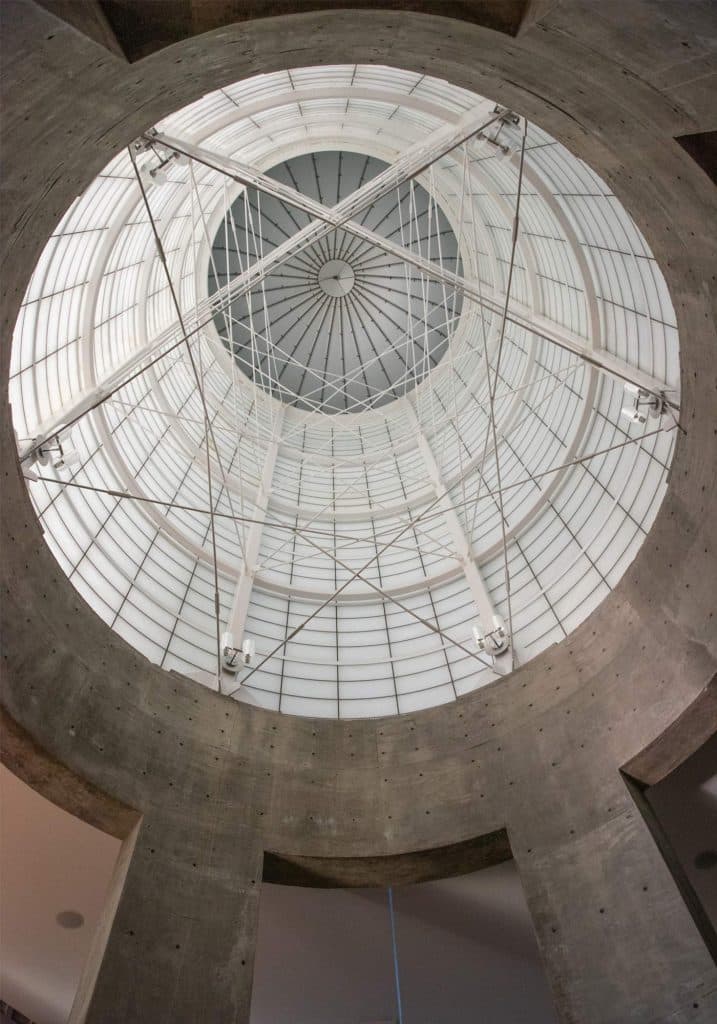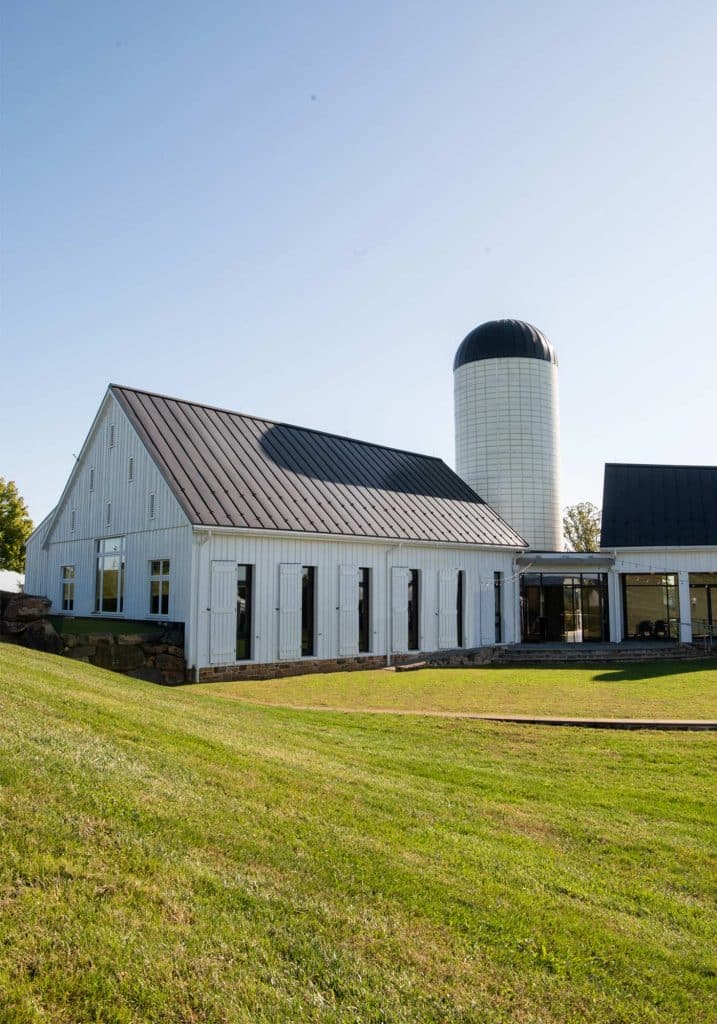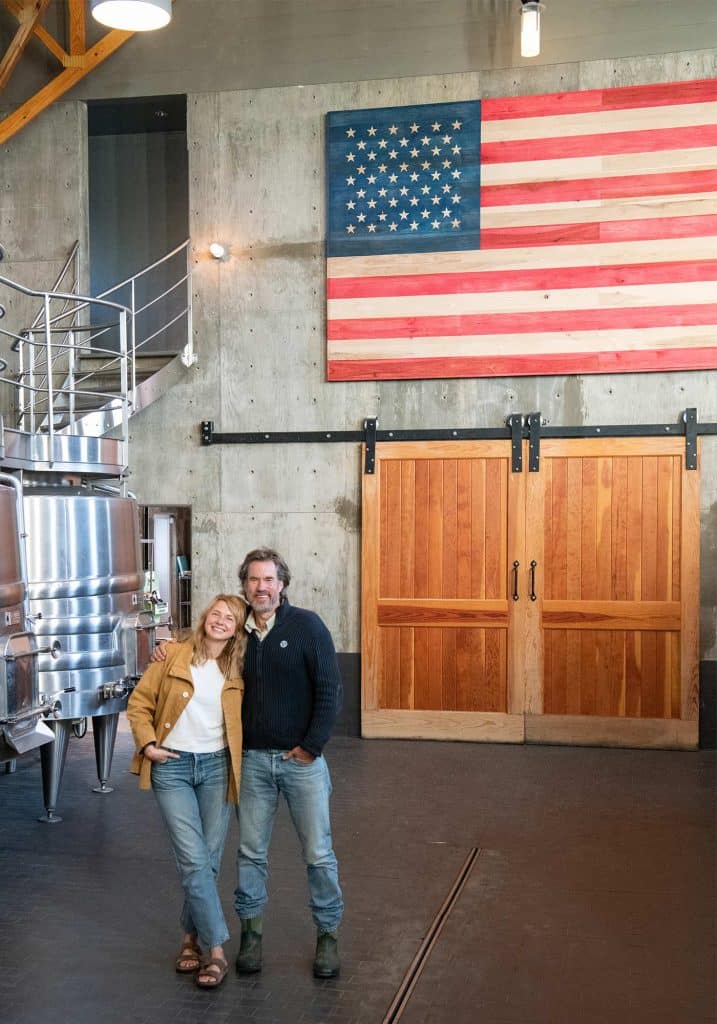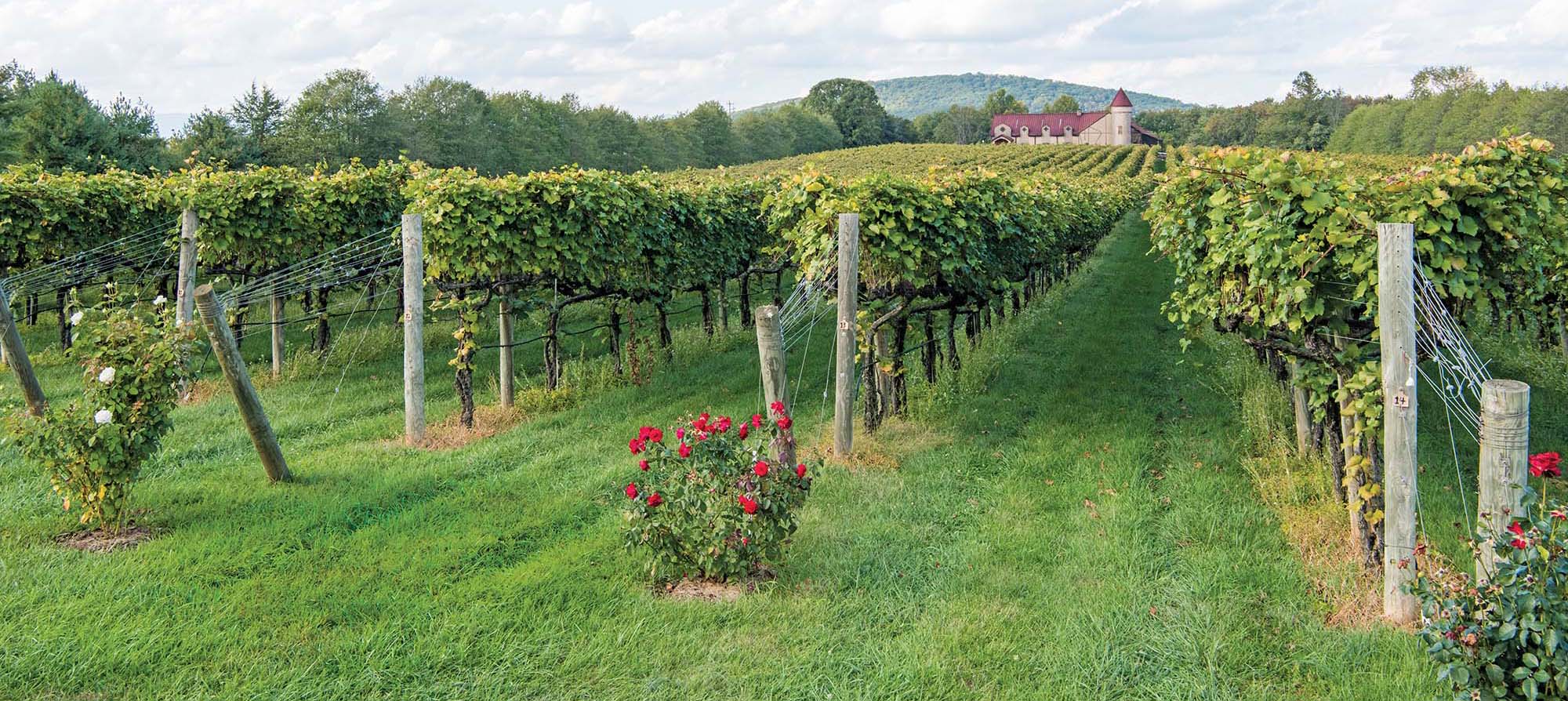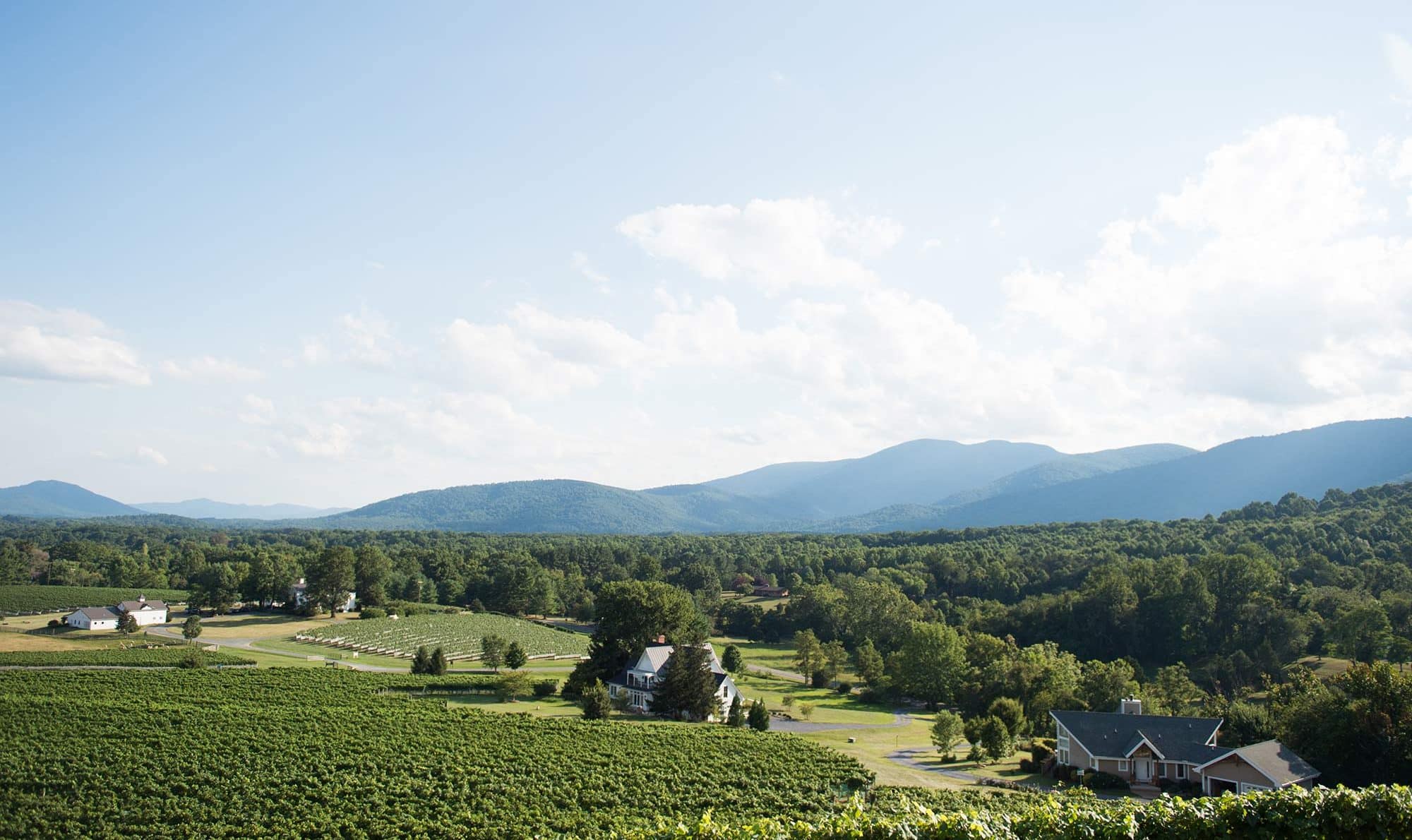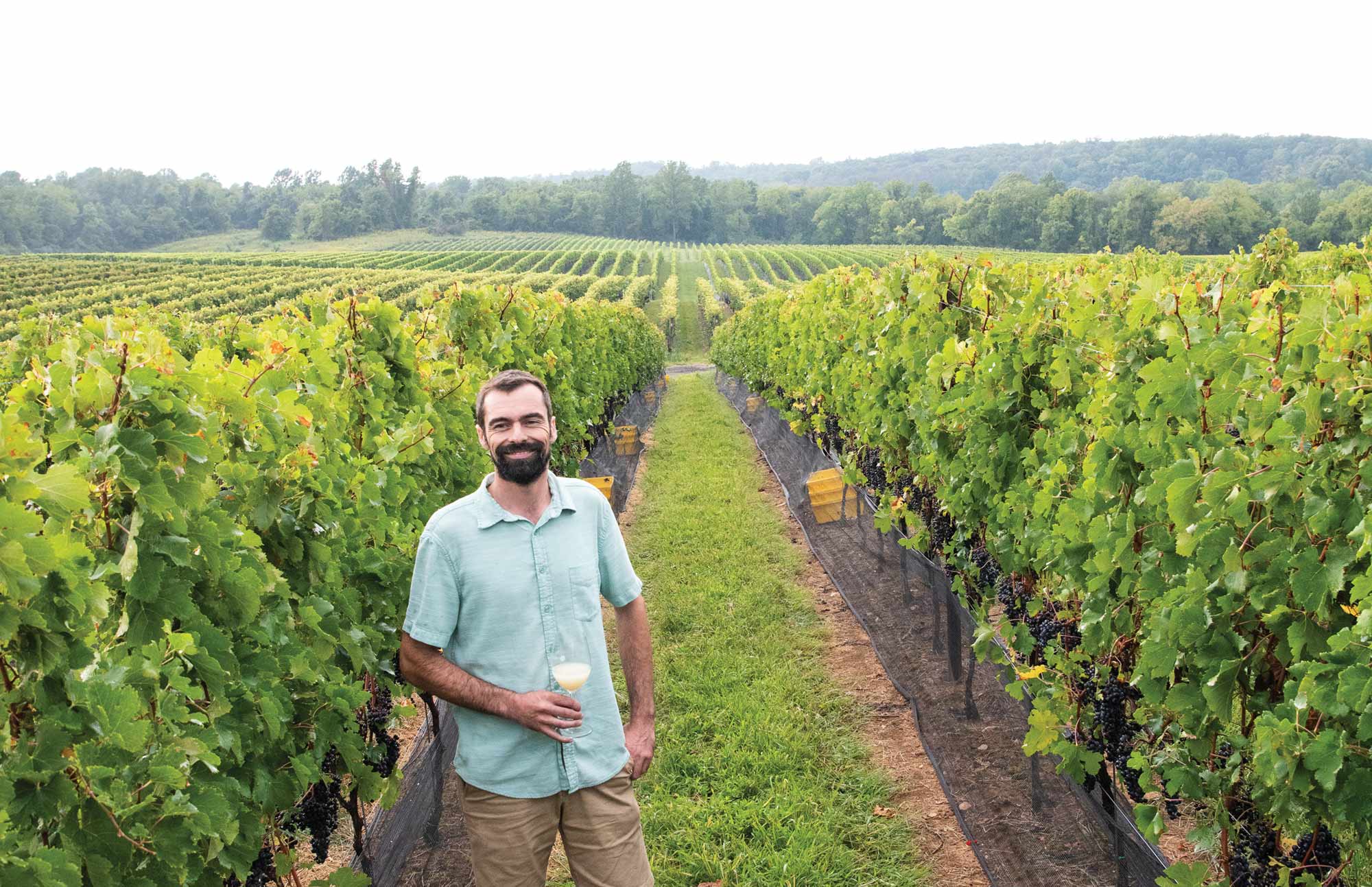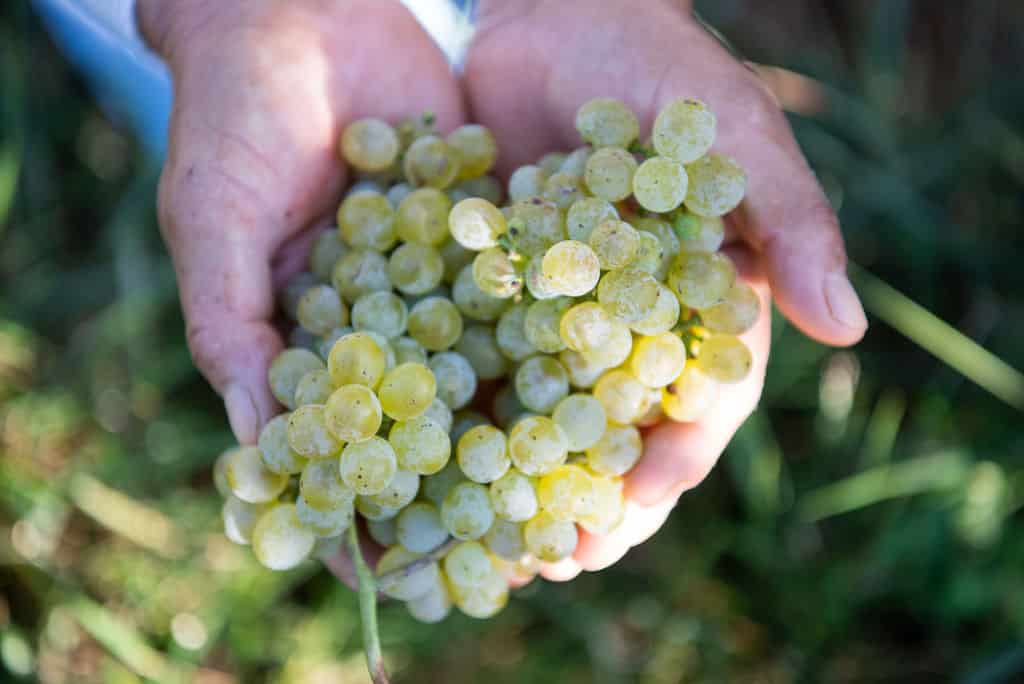There’s a lost mountain near Paris—not the City of Lights in France, but Paris, Virginia. This small, unincorporated township is nestled in the verdant and rolling bedrock hills of Virginia. The area was missing from maps until a young George Washington plotted its existence while working as a surveyor for Lord Fairfax long before his presidency. It’s now home to a popular hiking loop in the heart of Virginia’s famous hunt country.
A few miles from Paris is another “Lost Mountain.” In this case, it’s a world-class red wine, blended for aging in the Bordeaux tradition. It is meant to embody the unlimited potential of its namesake Virginia terroir at RdV Vineyards.
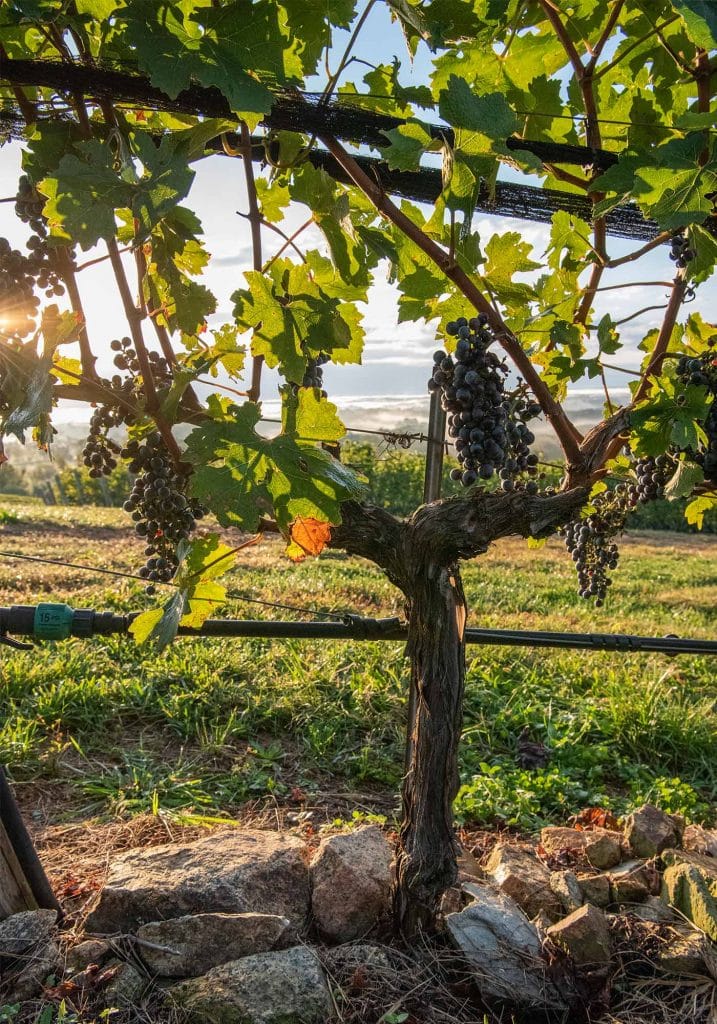
Already up at daybreak, Owner Rutger de Vink steps into the vineyard just outside the door of his striking home designed by the Seattle-based architect Tom Kundig. Kundig, whose award-winning work spans the globe, is known for designing in harmony with the surrounding landscape. This uniquely modern home rises up from the vineyard-covered mountainside overlooking both the valley and de Vink’s winery below.
De Vink goes by the title of Vigneron—the French term for one who cultivates grapes for winemaking. It’s a title he fully embodies, and one that is evident in how he lives among the vines he tends and nurtures his grapes to create the finest wines possible. This is a skill he first developed in the Bordeaux wine region of France.
Bordeaux’s Influence on RdV Vineyards
Rutger de Vink grew up mostly in Europe speaking Dutch, English and French. As a lover of art and history, the traditions of Old World culture always held a certain fascination for him. After a stint in the Marines and a successful career in the venture capital industry, he decided to go all in on a passionate and studious pursuit of disciplined excellence—making wine.
RdV’s Black Book, a behind-the-scenes commemorative journal that celebrates the vineyard’s tenth anniversary, chronicles de Vink’s tour of inspiration. De Vink received an invitation to the prestigious Maître de Chai gathering, an exclusive event for the cellar masters (or winemakers) of the great Bordeaux wineries. This marked the first time an American Vigneron had been included. He was joined by well-known Viticulturist Jean-Philippe Roby and legendary Enologist Eric Boissenot, both of whom now work closely with RdV Vineyards.
While there, de Vink saw inside the facilities, tried the wines at the legendary Château Latour and visited other storied vineyards, including Château Pichon Longueville Comtesse de Lalande and Château Cos d’Estournel. De Vink had worked years prior as an intern when he was first learning winemaking at Château Lagrange. Apprenticing in the Médoc peninsula gave him the opportunity to learn Old World winemaking traditions in the region famous for producing the finest red wines in France. It was there that he learned about the great qualities that grapevines could produce from the rockiest of soil.
Armed with a sense of mission and excited by the challenge of meeting the benchmarks of Bordeaux, de Vink spent years searching for the perfect spot to start his own distinctive wine. After traveling to California to research ground conditions near Santa Barbara and Mendocino, he decided to settle on this craggy plot in the foothills of Virginia, with the challenge of unproven, yet unlimited, possibilities.
Wine & Virginia’s Terroir
“The common denominator between great wines is that they ask you a lot of questions; they are not simple. It’s the same with people. You meet a lot of people during your lifetime and most of them are typical. But, some of them are extraordinary,” says Boissenot, who is responsible for the majority of Bordeaux’s most famous and collectible wines. “You cannot define them, and that’s why they are great.” As consulting enologist to RdV, and his only American client, Boissenot says he was attracted by their passionate attention to detail, creating what he calls the “human story of the great synergy here between the terroir, vineyard and people.”
On this Fauquier County property, de Vink and a team of trusted workers hand-tend some 30,000 vines of Merlot, Cabernet Sauvignon, Cabernet Franc and Petit Verdot varieties. Respected young Winemaker Joshua Grainer has been with de Vink since the inaugural vintage. He believed that great wine is made by “the earth and the elements coming together,” rather than by tricks in the cellar. Together, they describe the daily, intimate, two-way conversation with the land, where the grapes “speak” as to when they should be harvested. The most vigorous grapes demand to be picked first, while those under “stress” beg for more time to sweeten. According to de Vink, one of the wonderful things about older vines is that they slow down, and, if properly aided, their retained energy can flow into the grapes for premium flavor.
Though arduous, the rewarding process of growing grapes in the Northern Virginia environment is one that has also been undertaken by Breaux Vineyards, among other dedicated winemakers in the region.
RdV Vineyards’ Collaborations
In 2020, RdV Vineyards’s celebrated the tenth anniversary of its first vintage. The team celebrated this milestone with a series of flash sales and virtual tastings that featured famous friends and collaborators as co-hosts. A generous spirit, de Vink loves sharing the spotlight with others.
Chef Eric Ziebold, owner of Kinship and Métier, two Michelin Star restaurants in Washington, D.C., keeps a garden at RdV. In one of their anniversary virtual tastings, he joined de Vink, winemaker Grainer and de Vink’s wife, Jenny, who heads up the winery’s hospitality end of things, to discuss their 2012 Lost Mountain and Rendezvous wines.
According to de Vink, one of the wonderful things about older vines is that they slow down, and, if properly aided, their retained energy can flow into the grapes for premium flavor.
Another favorite episode welcomed Master Sommelier and wine director of ThinkFoodGroup Andy Myers. Together, they discussed their appreciation of Lost Mountain 2013 by likening its tasting to “CliffNotes” in the aforementioned “conversation between Heaven and Earth.”
Additionally, Master of Wine and founder of The Capital Wine School, Jay Youmans, educated viewers with a look at the 2015 and 2016 Lost Mountain vintages. Bringing it all home with a discussion of the last 10 years in the context of the evolution of Virginia wine was Virginia wine pioneer Jim Law of Linden Vineyards. Law has also been an influential mentor to de Vink and gave him his first apprenticeship here in Virginia.
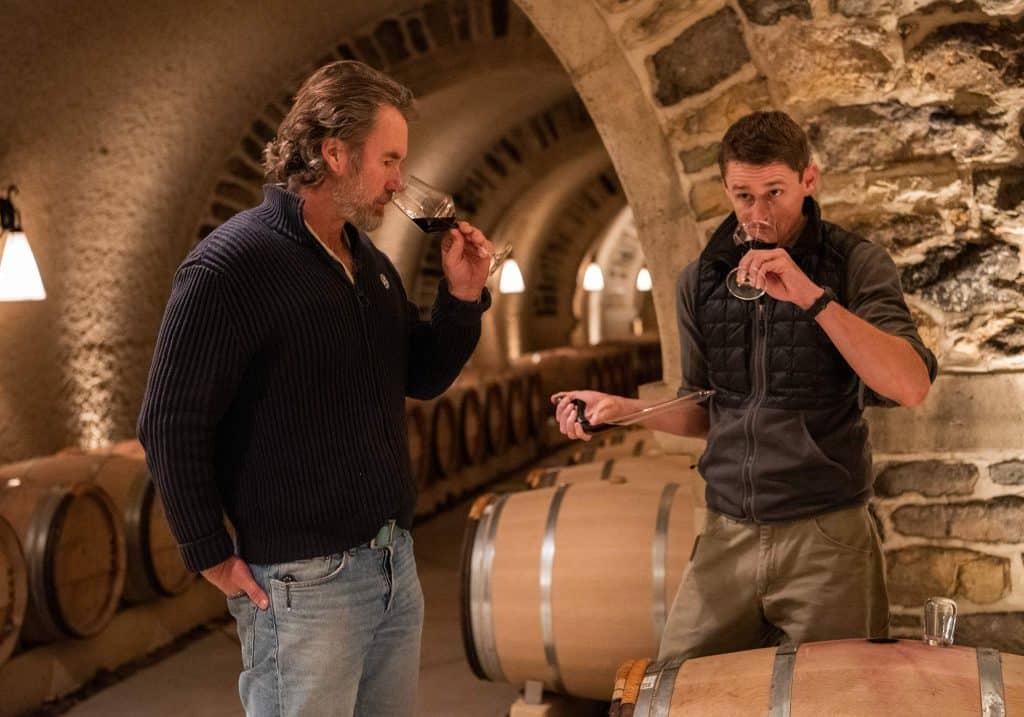
All About RdV Vineyards’ Wine Making Process
Lost Mountain is RdV’s signature blend, with a tannic backbone of Cabernet Sauvignon that deepens with age. Over the next decade, raspberry cordial and fresh cassis notes with milk chocolate overtones develop into classic complexities of tobacco, leather and coffee. The Rendezvous wine, usually a blend of Cabernet Sauvignon, Merlot and Cabernet Franc (and sometimes with a bit of Petit Verdot) is meant to drink now. It offers a crisp freshness balanced by the tension of supple tannins and ripe aromatics, while notes of bramble, tobacco and forest floor shine through with tones of ripe plum and raspberry. RdV Vineyards also makes an exclusive Friends and Family blend. All three of these wines go from vine to bottle on site.
De Vink takes great pride in utilizing the latest techniques and technologies in their winemaking practices. At RdV Vineyards, the fruit passes directly from the tractor to a series of sorting tables, the last of which has a camera registering the color-coded sweetness of each individual grape. Next comes fermentation in the shining silver tanks parked under a catwalk for easy loading, which visitors can view through a glass wall.
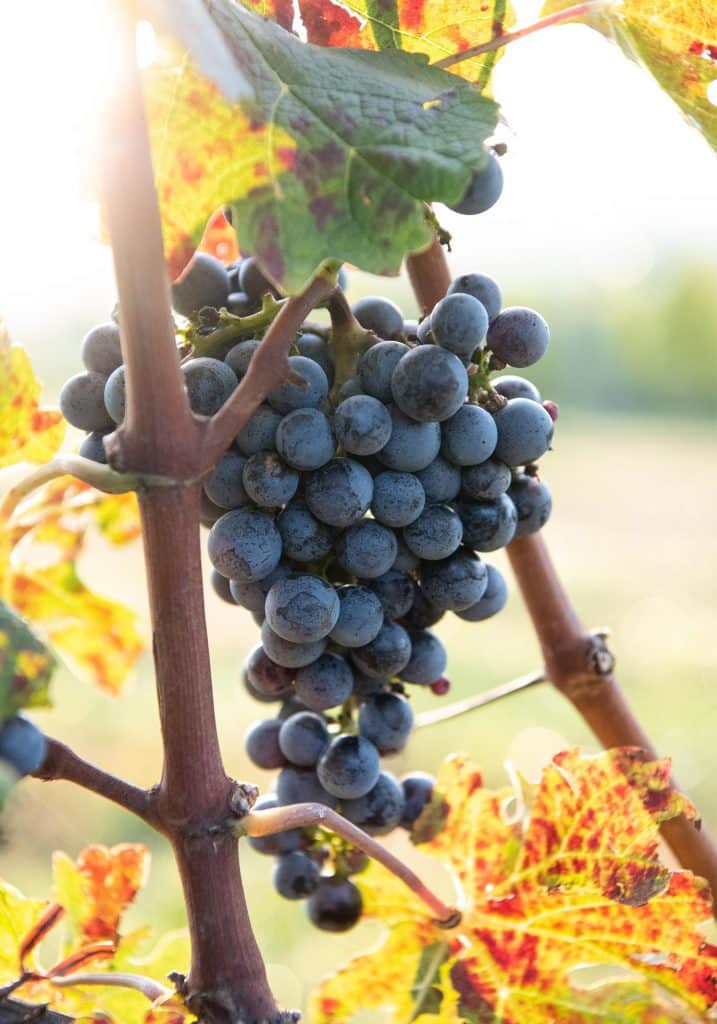
Even though they don’t submit to wine competitions, the team loves to test standards by inviting top chefs and sommeliers to what de Vink calls “paper bag” blind tastings. These tastings pit RdV’s vintages against the top wines in the world as a way to open their minds to the world-class achievements in the Virginia wine industry.
Hidden from the roadside, just past the old Piedmont Station, a winding road canopied by trees leads to an iron gate. From the road, there’s not much to see. The former cattle farm, deemed “unsuitable for agriculture,” took two years of clearing before the first vines could be planted, a project de Vink and Vineyard Manager Gabriel Flores undertook together in 2004.
The Award-Winning Facilities at RdV Vineyards
Neumann Lewis Buchanan Architects won a 2013 Palladio Award for designing the main building on the property, which at first glance appears to be a typically repurposed Virginia farm structure. In fact, it’s an all-new, trompe d’oleil bunker-cum-barn, which houses the winery, their offices and the tasting room..
The white workaday exterior conceals a sleek, modern upstairs of streamlined simplicity for the tasting room. Downstairs through the center of a glowing decorative silo, guests can descend into the winery’s production areas. A window wall showcases the laboratory and Grainer at work when it’s time for blending. There a matching glass-enclosed library displays treasured keepsake bottles, and bedrock core samples hang on the walls like works of art. From here, guests and winemakers alike enter the tunneled wine cave and barrel rooms. These were created in the time-tested Bordeaux traditions, where aging barrels of French oak are temperature-controlled by nature.
Visitors learn about the key element to RdV’s successful craft—the stone—and the story of de Vink’s passion for this particular plot of land. “A vast expanse of granite beneath the surface, a steep and craggy slope” was exactly what de Vink sought to create a distinctive wine. As one wanders the vineyards today, guests will note that stones are even piled up around the base of the vines as they grow to moderate temperature. This special stone terroir delivers the depth of flavor that great wines express, and de Vink and Grainer understand how to artfully extract those complexities.
How Wine Consumers Can Get RdV Vineyards’ Wine
Everything down to the logo represents heritage and harmony with the earth. The logo itself—a branch featuring three finches in silhouette—was taken from a design drawn by de Vink’s Dutch grandfather. It shows two finches facing forward and one looking back. In contrast to Virginia’s enjoyable “good times now” wine culture, RdV Vineyards is a time machine, conjuring the magic of liquid history in a bottle. Founded on a studious, historical approach to tradition and science, one bird reflects the wisdom of the past, side-by-side with a harmonious double-strength focus on future innovations.
The winery is accessible to the public for appointment-only tastings like the one Armchair Sommelier has well documented, as well as through their annual ambassadorship wine club that’s available at two levels. Ambassadors may schedule visits to the Tasting Room while enjoying exclusive access to limited-releases, on top of the allocation of signature wines that come as part of the subscription. Recently, the Ambassadorship club supported Chef Jose Andres’ World Central Kitchen’s #ChefsForAmerica effort, where a donation was made for each bottle shipped, a project for which the de Vinks feel passionate.
“Mother Nature keeps going on, so we have the opportunity to go out to the vineyards. Our thoughts are with the restaurant industry,” remarks de Vink, an ardent supporter of the culinary industry. When asked, “Why all this? Why wine?” He simply shrugs and says, “One thing I always enjoyed about being a Marine is that it’s a way of life. This [too] is a way of life.” ~
This article originally appeared in Book 11 of Wine & Country Life. Start your subscription here or give a gift subscription here. For more articles on Virginia wineries and wine country, as well as articles on types of wine, round-ups of area wineries and more, see our Food & Drink page.
is a writer, producer and brand ambassador who’s worked with James Ellroy, Davidoff of Geneva and Face Value for Aveda. Her latest project, American Psalm Book, is a collab with Bruce Wagner’s The Marvel Universe: Origin Stories.
R. L. JOHNSON is our co-publisher and creative director, Robin Johnson Bethke, who began her career as a professional photographer in Los Angeles before moving into graphic design and art direction when she relocated to Charlottesville in 1994. As our company’s co-founder and visionary, she enjoys all aspects of the publishing process from story conception to graphic design to photography. Her work is often seen in many of our publications.

